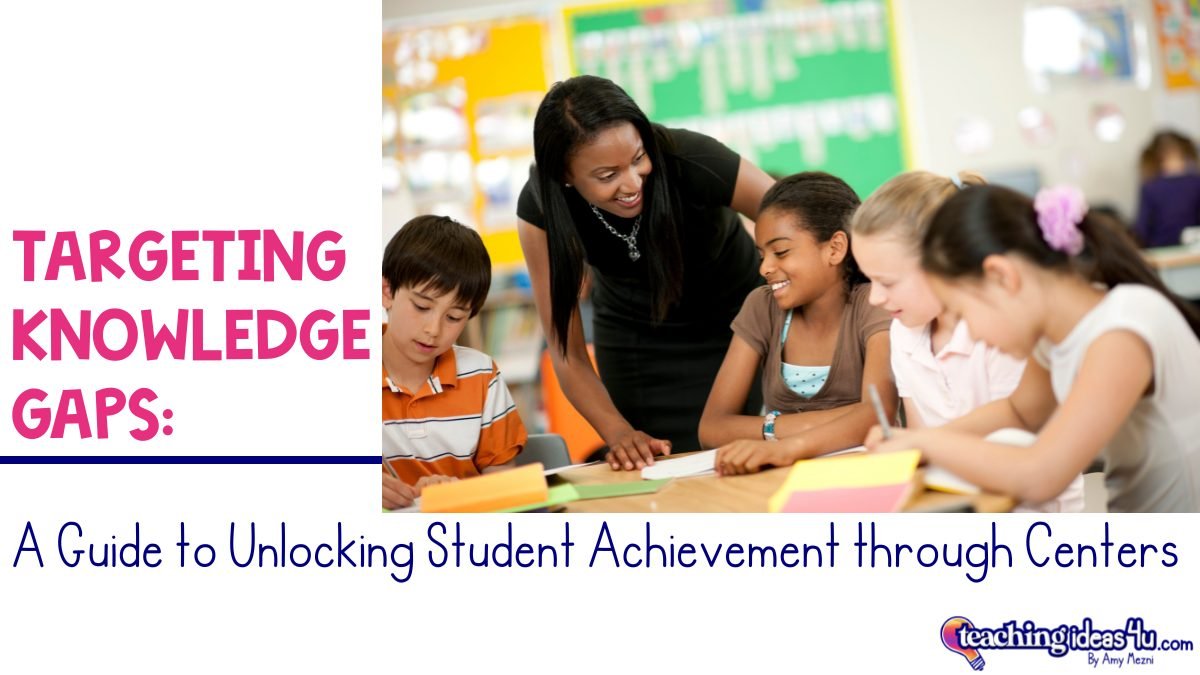A Guide to Unlocking Student Achievement through Centers
As an educator, you are always searching for ways to support your students' learning and help them achieve their goals. Using centers is one approach that can be highly effective at all grade levels: elementary, middle, and high school.
Centers are essentially stations or areas set up within the classroom where students can engage in hands-on learning activities, working either independently or collaboratively. By incorporating centers into your teaching approach, you can provide students with more individualized instruction that caters to their specific needs and interests.
Benefits
One of the primary benefits of using centers is that they can help address knowledge gaps in individual students. By setting up centers that focus on specific topics or skills, you can provide differentiated instruction that meets each student's unique learning needs. For example, if you notice that several students are struggling with reading comprehension, you could create a center that focuses on this skill and provide tailored activities to help them improve.
Additionally, centers provide a low-pressure environment for students to explore new concepts and practice skills. Students can work at their own pace, which can be especially helpful for those who may be struggling academically or who need additional support. Centers can also be an effective way to encourage collaboration, which can foster a sense of community and support social-emotional learning.
Choosing Activities
When choosing activities for your centers, it's essential to consider the individual needs of each student. You can use pre-assessments to identify areas in which students may be struggling and select activities that focus on those skills. To better target these gaps, you can have students work on different skills. You can also incorporate activities that reinforce concepts that have already been taught, as spiraling skills can help solidify students' understanding.
It's also important to ensure that the activities you choose are appropriate for the age and skill level of your students. Older students may need to review skills from younger grades, but they will be turned off by activities that appear babyish. Make sure you have the necessary materials and resources to support each activity, and consider incorporating online resources to supplement your centers and provide additional engagement and support.
To make centers effective, it's important to provide clear instructions and expectations. Before students use centers independently, you need to model, model, model what they should be doing - and review these expectations throughout the year as needed. Be sure to communicate to your students what they should be doing in each center, how long they should spend in each center, and what resources are available to support them. Providing feedback and support as needed is also critical, so be sure to either circulate among the centers to observe student progress and provide guidance or use self-checking resources.
Space
Finally, it's important to consider the physical space of your classroom when setting up centers. Make sure there is enough room for students to move around and access the materials they need. You should also ensure the centers are clearly labeled and organized, so that students can easily find what they need.
In conclusion, centers can be an effective tool for targeting individual student knowledge gaps and unlocking student achievement. By providing engaging activities that cater to each student's unique needs and interests, centers can help students make progress and achieve their learning goals. By following the tips provided in this article, you can set up effective centers in your classroom and help your students reach their full potential.

